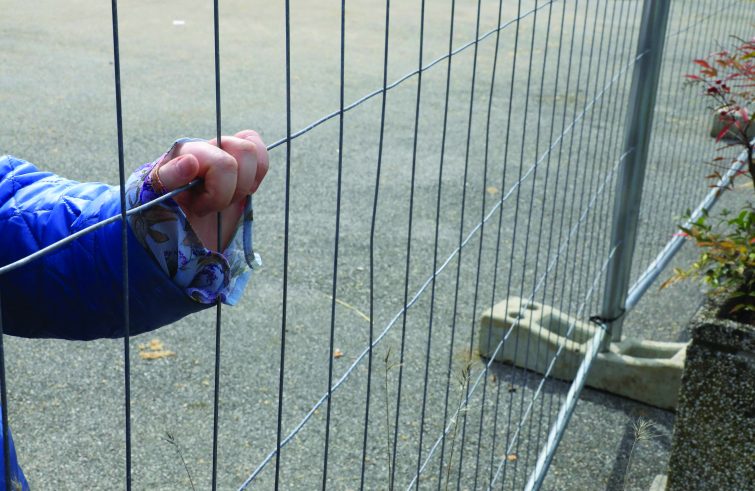
Among the victims of Covid-19 figures the hope of a Europe in which words like “border” are relegated to history books and accompanied by verbs exclusively in the past tense, painfully affecting also many border regions throughout Italy.
Faced with the expansion of the pandemic, each EU member State chose to proceed autonomously, while EU institutions stood idly by as the situation unfolded, unable to take the lead on shared and coordinated paths to prevent and combat the virus.
Thus many EU-27 governments have justified the random armouring of their borders with motivations supported sometimes by medical professionals, but above all to dispel (in the temporary confusion) the fears of the unknown disease by buying into the sovereign claims of their voters or the economic interests of their fellow citizens.
(Legitimate) prevention is quite the opposite: since time immemorial, however, in the face of unexplained death, man has felt the need to identify a scapegoat. In Manzoni’s time it was perhaps the oblivious old man dusting a pew in the church, while today it’s the stranger arriving from an undefined “exterior world” that changes depending on the circumstances…
This is precisely what happened along the border between Italy and Slovenia when, in mid-February, the government of Ljubljana decided to forbid Italian citizens access to its territory by physically blocking almost all habitual transit routes. The old, rusty barriers had long since been removed, and a stone wall was erected instead, with a clear message: “No crossing is allowed here!”
Suddenly the time clock was running backwards again, with the people living on the Soča river brought back to 75 years ago when (on June 15, 1945) in Ljubljana the Morgan Line established a temporary division of Venezia Giulia into zones A – under the Allied forces – and B – under Tito’s government-: it was the prodrome of the Treaty signed in Paris in 1947, that was to divide the people and territories that had been united until then. The strip of lime or white paint marked on the ground by the US military had penetrated deep into the earth and soul of the people.
The younger generations of Slovenian and Soca inhabitants have grown up with the border as something alien to their everyday lives.
 In this region of the Old Continent, the European ideal is not an abstract notion, in fact it attests to the fact that the “utopia” of Schumann, DeGasperi, Adenauer and Spinelli had been embraced by many local politicians and had become reality: their courage and prophetic vision had paved the way for dialogue and the building of bridges between people belonging to what were then called “different systems”. This took on an even more powerful significance because it occurred in that city whose squares, streets and neighbourhoods had been brutally divided 14 years before the world became outraged by the wall raised in Berlin in 1961.
In this region of the Old Continent, the European ideal is not an abstract notion, in fact it attests to the fact that the “utopia” of Schumann, DeGasperi, Adenauer and Spinelli had been embraced by many local politicians and had become reality: their courage and prophetic vision had paved the way for dialogue and the building of bridges between people belonging to what were then called “different systems”. This took on an even more powerful significance because it occurred in that city whose squares, streets and neighbourhoods had been brutally divided 14 years before the world became outraged by the wall raised in Berlin in 1961.
The symbol of this historical event has been and still is the area that Italians call “Piazza della Transalpina” and Slovenians call “trg Evrope”: divided by barbed wire for over fifty years. Once a dividing zone, it has become an icon of hope for the Europe of peoples that Mazzini first theorized almost two centuries ago.
The mosaic covering the centre of the square, created using pieces of the old border stones, saw Italians and Slovenians jointly celebrating the accession of Ljubljana to the European Union (on 1 May 2004) followed by the extension of the Schengen Treaty to the neighbouring Republic (on 1 January 2007), formally establishing the free movement of people, which had in fact been happening without problems for a long time along the Soča valley.
Visitors now typically take a souvenir picture with their left foot in one State and their right foot in the other, before stopping at the coffee shop of the nearby train station. Beneath the parasols languages mingle, testifying to a uniqueness that nowadays the inhabitants of Gorizia and Nova Gorica almost take for granted, underestimating all too often its importance and significance.
But then the Covid pandemic broke out.
The reinstatement of “this side” and ” that side” resulted in preventing what until then had been a daily routine of meetings and exchanges between institutions, between people, between Churches…
And once again, the most obvious place where all this was manifested was Piazza Transalpina/ trg Evrope, divided by a high metal fence installed in a hurry when selfies attested the idiocy of all those wanting to flaunt that they didn’t care about the restrictions just to drink a beer during the hours when the local inhabitants of Gorizia had to shut everything down.

Probably a greater degree of responsibility on everyone’s part (and a greater capacity for historical understanding on the part of the central governments) would have been enough to prevent a new, harsh humiliation from being inflicted on the history of two cities or, in any case, to reduce it to a minimum. This is especially true in the year in which Nova Gorica is applying for the title of European Capital of Culture for 2025, with the added value of its collaboration with Gorizia,
This was not the case but fortunately local realities have offered a glimmer of hope in the dark time of the pandemic, and many spontaneous initiatives have flourished, testifying to citizens’ ability to have a “vision.” Meetings culminated with a veritable cross-border panel that brought together mayors Rodolfo Ziberna and Klemen Miklavic.
Hopefully, in a few days, grids will be removed and circulation will resume on every border crossing.
We do hope – as Pope Francis reminded us in his Message for the World Day of Social Communications – that this experience will truly become part of our past: open borders are not to be taken for granted. They are a conquest to be lived and defended every day and be passed on to the next generation.












